
We had the wonderful opportunity to review not one, but two games from USAopoly, a company that has been producing games since 1994. The fun twist about USAopoly is, they create variations of beloved games, such as Scrabble, Clue, Monopoly, and Trivial Pursuit, featuring a wide variety of popular characters/shows/movies. They also create original games, two of which we have been able to review. We were thrilled to receive Tapple: Fast Word Fun for Everyone and Wonky: The Crazy Cubes Card Game.
Both games looked so interesting. They are packaged in bright, eye-catching boxes, and looked like they would be a blast to play. I admit, the funky shape of the Wonky box was quite intriguing.
You sure get the feel for these games as soon as you open the shipping box.
In case you couldn't tell, I had some very excited children. Technically, the older girls are going to be able to get more out of these games as the recommended age for both games is 8 and up. However, I planned on seeing if there was a way to include the younger children, because they really don't like to be left out. And I have learned, that it is fun to tweak things to be able to allow all the children to participate.
Which game to play first? I admit, it was a bit of a toss up. Originally, I had been drawn to this review because of seeing this game as a choice (I didn't know at that time that we were going to get to review 2 games!) Tapple definitely looked like a game I would enjoy, as I love word-type games. Though Wonky looked like loads of fun, I just had to start with Tapple.
In case you were wondering, the reason it is called Tapple, is because you have to tap down the letter then the hand buzzer before the timer goes off. Additionally, I discovered that there is actually a meaning behind the word Tapple. It is actually an acronym for Touch Activated Press & Play Letter Eliminator.
Now to take a look at Tapple:
Enclosed in the box you will find the Tapple wheel and an instruction booklet. On the outer edge of the wheel are the letters that are tapped down during play. There are only 20 letters, as the least common beginning letters were not included (these are Q, U, V, X, Y, Z). The yellow ring is the reset lever which is used at the end of the round to reset the letters for the next round. And in the middle you can see the red timer buzzer. Each time a player says a word, the buzzer is pushed down to start the timer back at 10 seconds, the amount of time each player has to come up with a word.
The object of the game is to think of words to fit the category before running out of time. These categories can be found on the 36 square category cards that are stored in the base of the Tapple wheel. I have to say, this is just ingenious! Once you finish a game, just place the cards back into the compartment and there is no chance of losing the cards.
As you can see, there is also a battery compartment for 2 AA batteries (which are not included) and an on/off switch. After we ran to get the screwdriver and batteries to power the game, we were ready to look at the cards.
There are two different colors of cards. The blue/white cards are on one side, and the yellow/red cards are on the other. We decided we would be using the blue/white cards as they contain the easier categories.
Once a category has been chosen, we press the buzzer so the timer starts. The first player says a word that fits, presses down the letter their word starts with, and presses the timer for the next person. Play continues in a clockwise direction. If a player runs out of time, that person is out. The winner is declared when only one person is left who hasn't run out of time. Other ways to get out are tapping a letter but giving a word for a different letter, and giving an answer that doesn't make sense. If there is a tie, play continues between those players, but two answers for each letter need to be given within the 10 second limit.

When we first started playing, I wasn't quite as strict with the rules as the girls are on the young side of the age range. I let them hit the buzzer again a couple of times if needed. I guess we could have played without a timer at all, but I didn't want to wait a huge amount of time between turns or the game could have lasted way too long. In addition, we tried to include the younger children when possible. It looked something like this: Tabitha, Amelia, and I were playing, but if Hannah thought of a word, she was able to take her turn. I would usually have to help her find which letter her word started with. Harold tended to just tap a letter, leaving it up to me to quickly come up with a word that worked. We don't include the younger children all the time, but I was glad to have found a way to do so.
I love that the game has educational value. Not only do you have to think of words that start with a letter, you are building your vocabulary and knowledge of the different categories as you hear other players' responses to the categories. Additionally, different ideas for using Tapple as an educational tool are shared on the website under the "Learning Time" tab. Suggestions include turning off the timer and allowing the child to come up with a word for each letter in the category, writing it if the child is old enough to do so. The Tapple wheel can also be used by children to practice spelling. Just say the spelling word and have the child tap it out. I think this is a great hands-on spelling activity. Some other suggestions for changing things up are to have to think of 2 words every time, or to play in teams.
We are really enjoying this game, though there are times of frustration when words won't come to mind before the timer goes off. I can definitely see why Tapple is recommended for older children and adults. Younger children haven't had the same exposure to the world, so it is harder for them to come up with answers for some of the categories. However, as they join in and play, they will be exposed to all these new words and ideas. Definitely a game we will continue playing and one I highly recommend.
Now, let's move on to Wonky:
The children were just as excited to get into the Wonky game as they were to play Tapple. In fact, Harold was looking forward to it even more, because he saw blocks! What he didn't know was, these are no ordinary blocks. This game is called Wonky for a reason. These blocks are not perfect cubes. They have some curved sides, making it a challenge to get them to stack. Some skills in balancing, along with a steady hand, are definitely needed with this game. Adding to that challenge is the card game part of Wonky.
So, just what is included in Wonky? Here, let me show you.
Wonky comes with 9 different sized blocks in three colors (purple, blue and yellow-green). There are 3 small blocks, 3 medium blocks, and 3 large blocks. If you look carefully in the picture, you can see what I was talking about regarding the irregularity of the blocks. A pack of 54 Strategy cards is also included. There are Block Stacking Cards, Action Cards, and Combo Cards (which include a block stacking challenge and a action that is to be taken if the player succeeds in stacking the block). Also included is a small drawstring storage bag in which we keep the blocks, and an instruction booklet.

As you can see, the images on the cards specify which block is to be played. You could use the "Any size, any color" card, "Any color with a specific size" card, or use one of the cards that shows you specifically which block to stack. The curved arrow card allows you to reverse the direction of play, and the hand card allows you to pass your turn. Or you may have a combo card. Those are the ones that have a white and gray side. You will be able to stack any block you want. If you are successful, you will either be able to reverse play or have the next player draw a card.
Each player is dealt 7 cards, one of which is to be played each turn. Which means, the blocks you get to play are limited to the cards you hold in your hands. The rules state that the tallest player should go first. I admit, we usually break these type of rules. As we are most likely always playing together as a family, that would mean daddy or mommy would always go first. Instead, we take turns going first.
On your turn, you look at your cards to determine which block you would like to play. Of course, it would make sense to start with one of the large blocks, but the girls sometimes think it would be fun to lay a small block down first. To each their own, I guess. Play moves clockwise, with each player choosing a card to play. If a block is stacked, the player has to count to three to ensure that the tower isn't going to fall. If successful, play moves to the next player. However, if the tower falls before that player gets to play their card and block, they are then penalized.
The Action cards come in really handy if you don't have a block to play or if playing it will knock the tower down. You can either reverse the play or skip a turn. If you can't play any card, you have to continue to draw cards from the deck until a playable card is found. Of course, players want to avoid this, because the goal is to get rid of all the cards in your hand. There are other times a player may end up with extra cards. If you knock down the tower on your turn, you need to draw 3 cards. Additionally, some of the combo cards include Draw actions.
There are two ways to win this game. You either need to be the first one to use all the cards in your hand (your final move being a block stacking move), or you need to successfully place the 9th block on the tower. This is much harder than it looks. Even when stacking them without playing the card game, we have been unable to do it.
I have tried included the younger children in this game, and it is quite possible; however, getting the tower to stack for any length of time does not happen. They like to try to stack the blocks, but they are just not gentle enough. When we include them, we know we are not going to have much success, but it is worth it to let them play too. Harold does get a kick out of being allowed to play with the blocks by himself.
Wonky is a great game for working on strategy and balance. You have to learn where you can put the block to get it to balance out and not fall. Patience is definitely needed for this game.
I highly recommend Wonky as well as Tapple from USAopoly. They are great family games that allow the players to work on various skills. Both games are for ages 8 and up and can be played by 2 or more people (up to 8 players for Tapple). One of these days I would love to play Tapple with a group of adults. We did get to play with our future daughter in law a few weeks ago and it is definitely different than playing with younger children. It is much more of a challenge and we don't have to worry about hurting little girls' feelings when they get out.
Both games are available for $19.95.
You can find USAopoly on Facebook, Twitter, Pinterest, and Instagram.
Don't forget to click on the banner below to check out my fellow Crew Mates' thought about Tapple and Wonky.







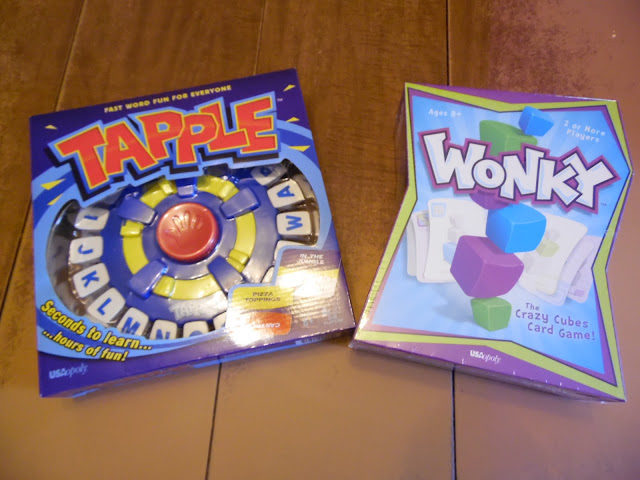






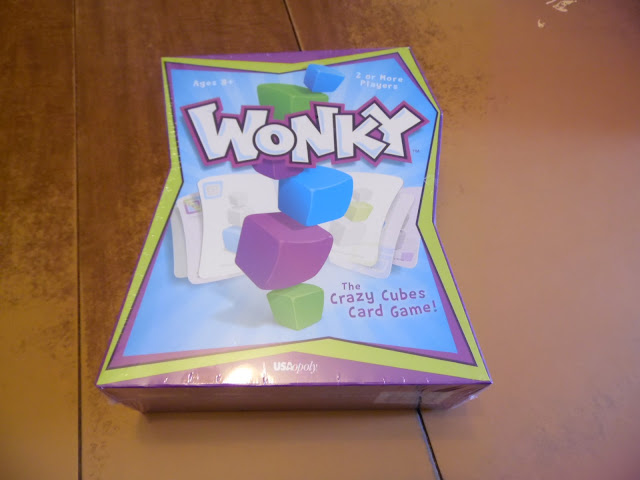























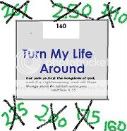
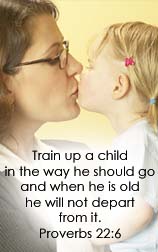



![[PREMIO2009.png]](https://blogger.googleusercontent.com/img/b/R29vZ2xl/AVvXsEjXD_Gx-wZ9EM5hXKrEYLksEBkYfRQtmb8VDVTDG_yyLggQoFIstZsh4zszdG20KqErZicRzEhiNYLty7j3IMXJYsABqkXjr8pp-ncj71xCbpxlXGbGpZq2fTuDQqq1RMKV4DPcDBnBViA/s1600/PREMIO2009.png)
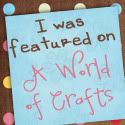



No comments:
Post a Comment
Thank you for visiting my blog today. I love to read your comments, so please leave me one if you have the time.
Blessings